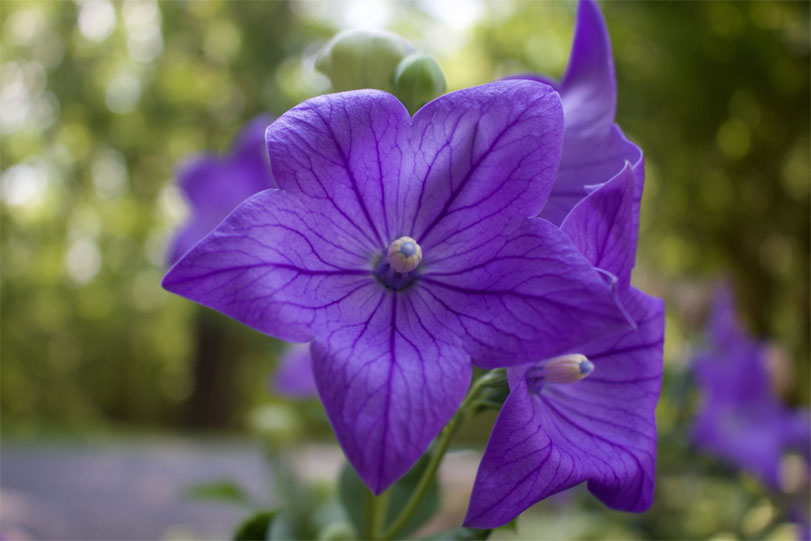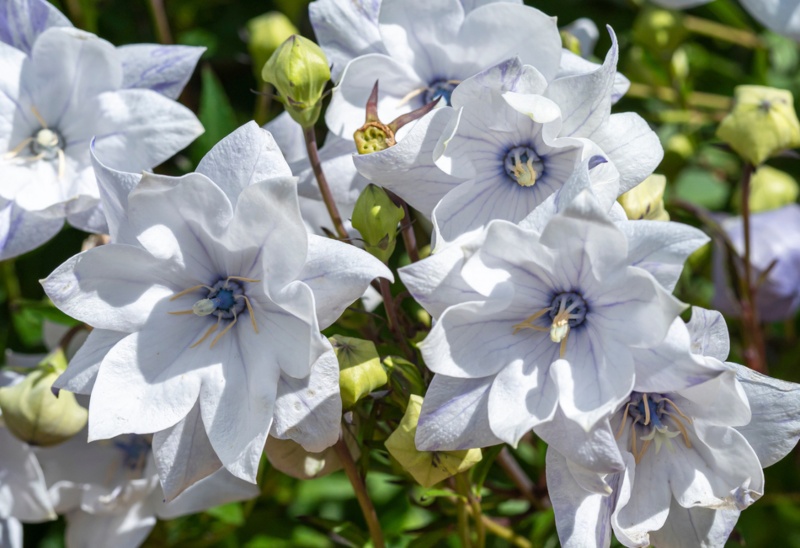
Balloon Flowers are often a very distinct flower that you can easily recognize in a garden, but some varieties are more unique, making them difficult to pinpoint. All balloon flowers are native to eastern Asian countries, and they can range in color from pink to blue. Most varieties have five petals that give the flowers a star-shaped bloom.
Growing balloon flowers in your garden is simple, and regardless of the variety, it will not require much care. Some varieties do need more light or water than others, so in this guide, we are going to take a look at 10 different types so that you have an idea of how to grow each.
Fuji Blue
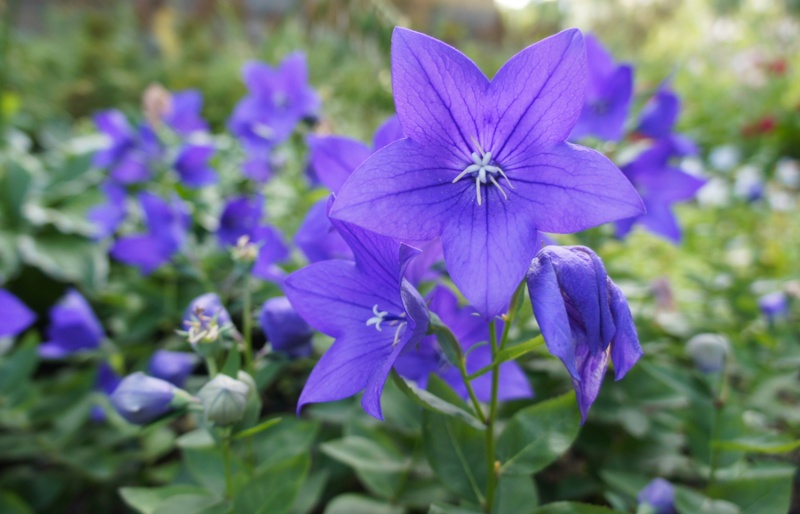
The Fuji blue variation is a bit transparent in color, but it is actually almost purple. The plant can grow to be 20 inches in height, and it needs about four to six hours of direct sunlight a day. It can grow with very little water and in any type of soil. The plant blooms in midsummer, and when the blue flowers are present, it will attract bees to your garden. This variety grows best in hardiness zones three to eight.
Mother of Pearl
This is a rare variation of the plant that is not commonly seen in gardens. It produces pale pink flowers that have slightly darker veins running through the petals. The mother of pearl will grow with ease in warmer climates, and at maturity, the plant should be about 24 inches in height. When placing them in the ground, leave a space of about 12 inches between each plant. Full sun, moderate water, and well-draining soil are best for growth.
Sentimental Blue
As another light-colored blue variant, the sentimental blue is a dwarf variety with blooms that are approximately 3 inches in diameter. When the plant is fully mature, it will only be about 6 to 8 inches in height. It does best in full to partial sun and soil that is loamy but drains well. The blooms of this plant have five petals, and dark purple veins go through each one. These plants tend to grow well in a rock garden or as a border plant in a preexisting garden. Also, blooms can be seen during most months during the summer.
Fairy Snow
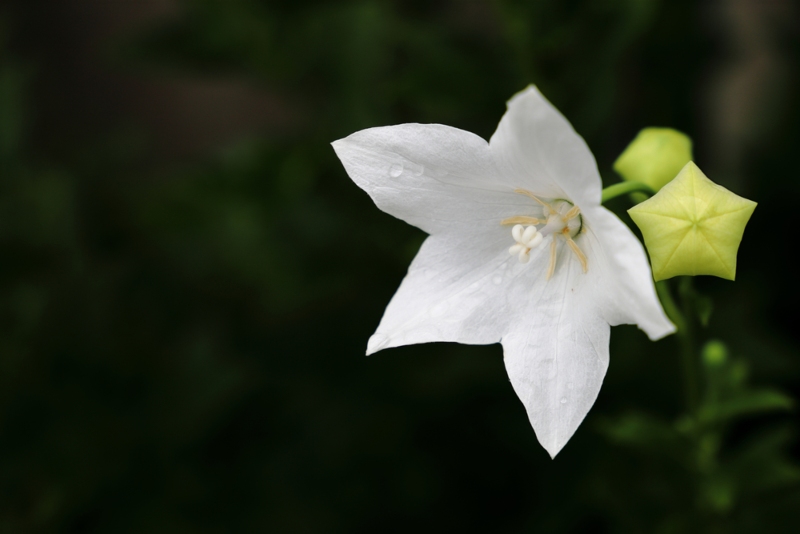
Fairy snow is a variation that has white flowers, but in each one of the five petals, you will see slight, blue veins through them. The flowers of the plant can grow one per stem, but sometimes, a cluster grows on the top of the stem of the fairy snow plant. The plant is not very large, and with a mature height of about 6 to 10 inches, it is considered a dwarf variety. Blooms can be seen in mostly July and August, and it does well in conditions that can be found in hardiness zones three to eight. Fairy snow can grow in partial shade or full sun.
Apoyama
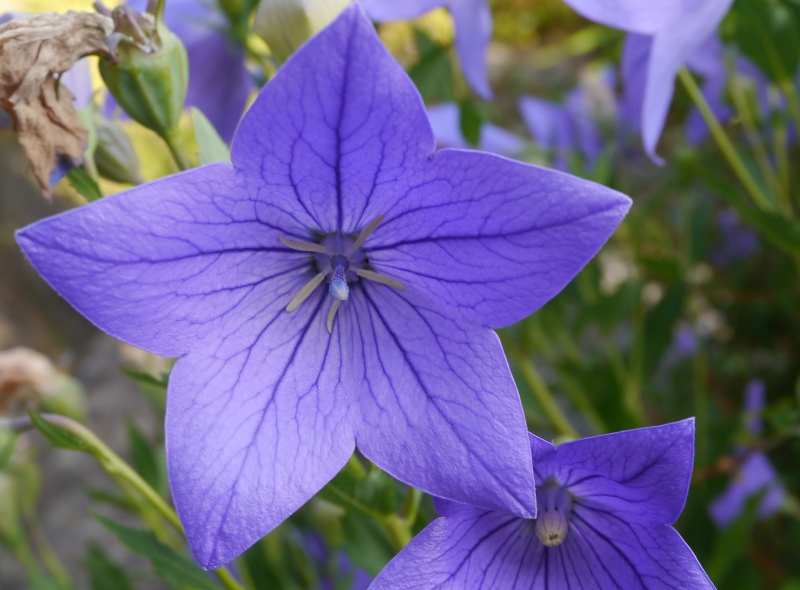
The apoyama is a very hardy plant that tends to grow in colder climates as well as warm ones. When the cold becomes too much, the plant dies back and regrows in the spring. It needs full sunlight for a few hours a day at least, but it will grow in partial shade as well. The soil also needs to be well-drained so that your plant does not get root rot. It will do well in loamy soil, but any type of soil will do. The violet flowers can be seen during the summer months of July and August.
Apoyama Misato Purple
If you enjoy having deep purple flowers in your garden, this is the variant of balloon flowers you want to consider. It is a dwarf variety, so it will need to be planted in the front of your garden. It grows best in hardiness zones three through seven, and it does not require much care. It grows well in both partial and full sun. When it comes to soil, slightly alkaline loam is preferred, but any well-draining soil will do. The dark purple color of the flowers will also attract butterflies and other pollinators to your garden space.
Komachi
The komachi is a variety of balloon flower that has bloom that do not open, so even during the summer blooming period, the petals will be curled into a bud. These buds are dark blue, and if you press on the flowers, they make a popping sound. This is a plant that can easily grow to reach 24 inches in height. It needs full sun and regular watering to grow in zones three to eight. The plant can adapt to grow in virtually any type of soil.
Double Blue
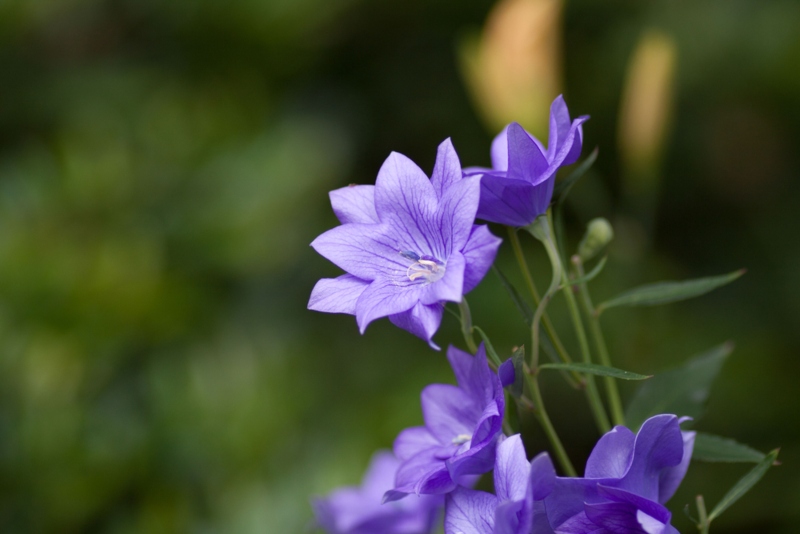
The double blue is the first variation of this plant that has more than five petals. This effectively has two rows of petals on each flower, so there are 10 petals that will look great alongside other plants like baby’s breath or sedum. It has the same purple/blue color that the Fuji blue has, and it blooms throughout the entire summer. The double blue can be seen in zones three to eight, and it grows in both partial and full sun conditions. Soil needs to be well-drained; any type of soil will work, but the plant does best in loam.
Hakone Double Blue
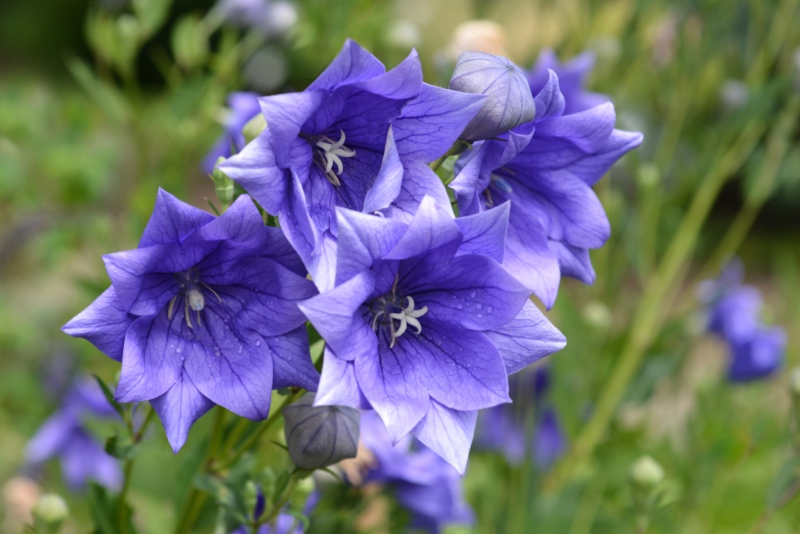
This is another type of balloon flower that has a double flower. This blue plant can grow alone on a single stem or grow in a cluster of a few flowers on the stems. This plant grows to be 18 to 24 inches when it is mature, and it has a spread of 12 to 18 inches. It will create blooms from June until August every summer in hardiness zones three to eight. The hakone double blue can grow in either full sun or partial shade. It will need very little water, and it can grow in well-draining, loamy soil.
Hakone Double White

The hakone double white balloon flower is similar to the hakone double blue, but it has flowers that are white in color. The buds are a light blue color before the flowers bloom, which leaves light blue veins throughout the petals. It can grow in either full or partial sun, and it can grow in any type of soil, as long as it is soil that drains well. With the right care, it can easily grow to a height between 18 to 24 inches. This plant also has a widespread, so make sure to leave at least 15 inches between each plant.





